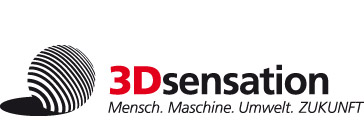Modular assistance system for safe 3D navigation and human-machine interaction of autonomous mobile robots in indoor and outdoor applications
Precise spatial and temporal mappings are mandatory for human-robot cooperation (HRC) as well as for safe navigation and docking operations (rendezvous maneuvers) of mobile handling and robots. Currently deployed mobile systems with logistic process functions use different technology methods for position detection, including optical markers or an electromagnetic/mechanical approach for path guidance to ensure high safety and robustness. This makes it difficult or impossible to use in a changing or dynamic environment. The high hazard potential due to possible collisions with objects, e.g. other mobile systems or humans, that can only be 3D modeled to a limited extent so far must be reduced by additional, also inflexible, safety techniques, such as protective grids, light curtains, or by special “sensitive” robots with reduced mass, high elasticity, tactile sensor technology and limited movement speed.
The goal is a modular 3D assistance system installable on mobile robots and automata, consisting of multimodal 3D-enabled sensor components, intelligent processing units, and a communication infrastructure, with precise self-localization, collision-proof navigation, and capabilities for precise docking, i.e., performing rendezvous maneuvers, and 3D-guided robot/human/tool interaction.
Participating partners:
- MartinMechanic Friedrich Martin GmbH
- LUCAS instruments GmbH
- Center for Image and Signal Processing e.V.
- Fraunhofer Institute for Applied Optics and Precision Engineering IOF
- Otto-von-Guericke University Magdeburg
 Man. Machine. Environment. FUTURE
Man. Machine. Environment. FUTURE